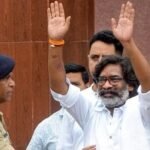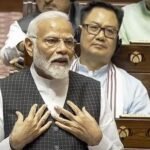The Sukhvinder Sukhu-led government in Himachal Pradesh finds itself embroiled in a political crisis following the defeat of Congress candidate Abhishek Manu Singhvi in the recent Rajya Sabha elections. The victory of BJP nominee Harsh Mahajan has exacerbated tensions within the ruling party, leading to significant repercussions, including the resignation of Minister Vikramaditya Singh.
Vikramaditya Singh, the 34-year-old MLA representing Shimla Rural, made headlines with his decision to step down from his position as the Public Works Department (PWD) minister. His resignation marks a critical development in Himachal Pradesh’s political landscape, with implications that extend beyond mere ministerial reshuffling.
Vikramaditya Singh’s political trajectory is notable, particularly given his lineage as the scion of the erstwhile princely state of Bushahr and the son of the late Raja Virbhadra Singh, a towering figure in Himachal Pradesh politics. His ascent within the Congress ranks, from state Youth Congress president to winning consecutive Assembly elections, underscores his growing influence and stature within the party.
However, Singh’s decision to resign from the ministerial post underscores deeper fissures within the Congress party in Himachal Pradesh. His assertion of being “humiliated and undermined” points to simmering tensions and power struggles within the party’s ranks, exacerbated by factionalism and competing interests.
The resignation of Vikramaditya Singh not only reflects personal grievances but also highlights broader rifts within the Congress party, particularly between factions aligned with his mother, Pratibha Singh, and those loyal to Chief Minister Sukhvinder Sukhu. The longstanding rivalry between these factions has now come to the fore, threatening the stability of the state government and raising questions about its ability to govern effectively.
As Himachal Pradesh navigates through this period of political uncertainty, the ramifications of Vikramaditya Singh’s resignation reverberate beyond mere administrative reshuffling. The episode underscores the fragility of coalition politics and the challenges inherent in maintaining unity and coherence within a diverse political landscape.
In conclusion, the crisis unfolding in Himachal Pradesh serves as a stark reminder of the complexities and intricacies of state politics. As stakeholders maneuver through this period of upheaval, the need for dialogue, reconciliation, and concerted efforts towards political stability becomes imperative. Only through collective engagement and a commitment to democratic principles can Himachal Pradesh chart a path towards sustainable governance and inclusive development in the days ahead.









